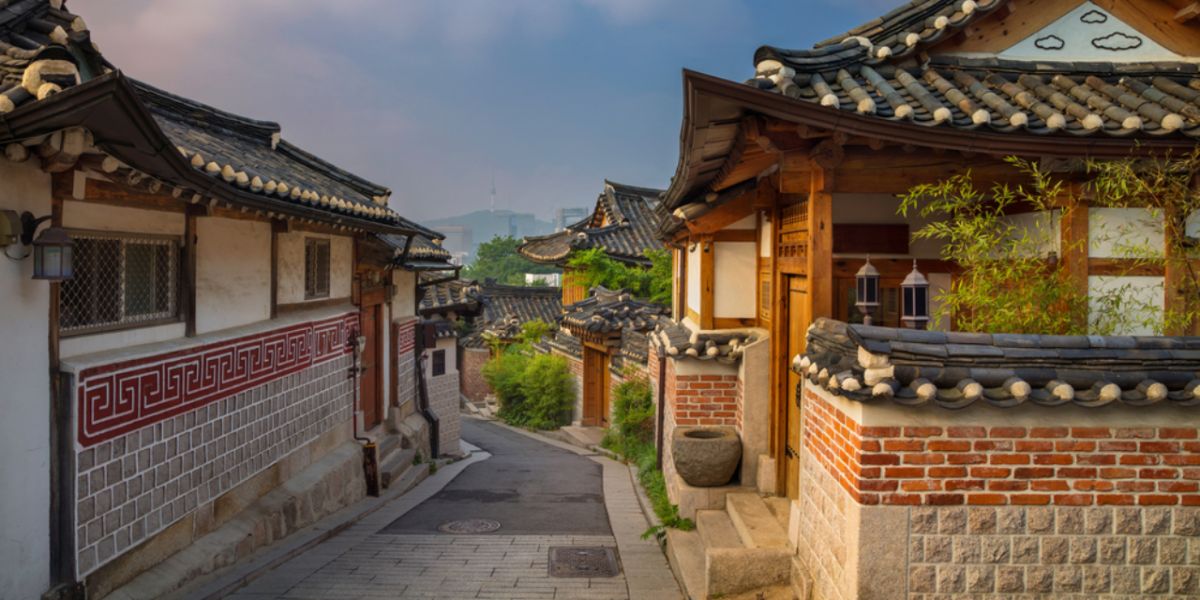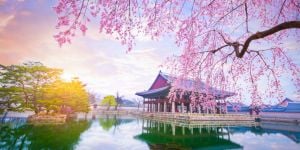
The city of Seoul is divided into 25 different districts that we call "Gu" and which vary in size between 10 and 47 km². It would be difficult to cover all the neighbourhoods in detail, so we will focus on the most dynamic and interesting in terms of housing.
In Seoul, the cost of living is relatively high, and it is more interesting from a budgetary point of view to move to the suburbs, however, the size of the city means you could lose a lot of time in commuting - don't dismiss altogether the distance you will have to travel, regardless of the tempting price tag!
Popular neighbourhoods in Seoul
It is hard to name one neighbourhood that stands apart from the others when it comes to security - Seoul being a very safe city both day and night. While it is, of course, recommended that you opt, in principle, for a neighbourhood with video surveillance that is well-lit, the low crime rate in Seoul certainly does not advise against any one particular neighbourhood.
Mapo-gu
Mapo District is undoubtedly one of the most well-known for foreigners, and especially for students, thanks to the presence of Hongik and Sogang Universities and its proximity to Yonsei and Ewha colleges.
A dynamic area, it is an ideal area for students or young expatriates looking to enjoy the Korean nightlife and to meet new people. Although festive, all you have to do is walk a few blocks from the main arteries of Hongik University subway station to find quiet accommodation that's only a few minutes' walk from the party.
The Hongdae district (a contraction of Korean words for Hongik University) represents only a small part of Mapo-Gu district, the rest being residential but still dynamic. Young expatriate executives, alone or as a couple, will probably feel more comfortable at the Gongdeok subway station, close to the Yeouido business district, providing easy access to the various trendy neighbourhoods while offering a more family-friendly Korean atmosphere.
While it is possible to find a studio or an affordable houseshare at the universities, this district - because of its dynamism and the benefits it offers - remains expensive, especially should you want to move into an apartment with more than one room or space for a family.
Seodaemun-gu
Nextdoor to Mapo-Gu, Seodaemun-gu is home to two major universities in Seoul (Ewha and Yonsei Universities) and also has a vibrant student life, while retaining some more traditional aspects in comparison with its neighbour.
The standard of living here is similar to Mapo-Gu (middle to upper class), but the setting is less vibrant, and you will have access to more nature thanks to the numerous parks and the ramparts of the city - on which you can go for a ride. There is even Ansan mountain, perfect for hikers. If you are looking for a detached house rather than an apartment, direct your search towards the Yeonhui-Dong district.
Yongsan-gu
Located in the heart of Seoul on the banks of the Han River, it is in this district that Itaewon is located, the privileged area of expatriates that includes a large number of shops and restaurants offering services in English. Living in Itaewon and its surroundings (the HBC district in particular) will guarantee you a simpler approach to life and easier access to hairdressers, manicures, telephone services ...
Itaewon and Haebangchon are the neighbourhoods where foreigners find the easiest access to accommodation. You may find that homeowners here are the most accommodating with non-Koreans, especially when it comes to deposits, which can be lower than elsewhere or even non-existent (though this is not guaranteed!)
Seoul is a very safe city; however, Itaewon - due to its many bars and clubs - can put people off due to the presence of late-night revellers. Some may prefer a quieter area (although it must be said that once you're out of the vicinity of the main street, the neighbourhood is no louder than any other).
Among the different neighbourhoods of Yongsan, Hannam-dong is known for its many family expatriates and diplomats, and as such is a very safe neighbourhood. Apartments are often spacious and you can also house-hunt here, though prices are generally high.
Gangnam-gu
This famous district is one of the most modern and popular in Seoul. Apartments are often small for a much higher budget than in the rest of the city, however, if you can afford it, you can enjoy a sophisticated and dynamic atmosphere with more comfortable living spaces.
Seocho-gu
One of the main attractions of the district of Seocho-Gu is the French quarter of Soremaeul. While this is not the least expensive district, you will find a little bit of France and its family atmosphere here, making it an attractive option for families and expatriates wishing to escape the student life.
Besides, families wishing to school their children in a French school will find the French lycée in Soremaeul.
In conclusion, the more modern the district, the higher the rents - and the same goes for the buildings. When you visit, pay attention to the condition of the building and the housing - ageing properties are not always well maintained in Seoul and can hide problems with damp or insulation.
We do our best to provide accurate and up to date information. However, if you have noticed any inaccuracies in this article, please let us know in the comments section below.








